Ensuring Accurate Asphalt Dosage for Portable Asphalt Mixers
Asphalt debarrel equipment plays a crucial role in providing precise quantities of asphalt for bitumen batching plants. In the context of portable asphalt mixers, the requirements for asphalt dosage accuracy are heightened due to volume limitations. Achieving a reliable connection between the debarreling process and the mixing link is essential to avoid inconsistencies in the performance of different batches of mixtures. This article explores effective strategies for coordinating equipment functions, such as integrating metering systems and designing adjustable output flow valves, to ensure accurate asphalt dosing.
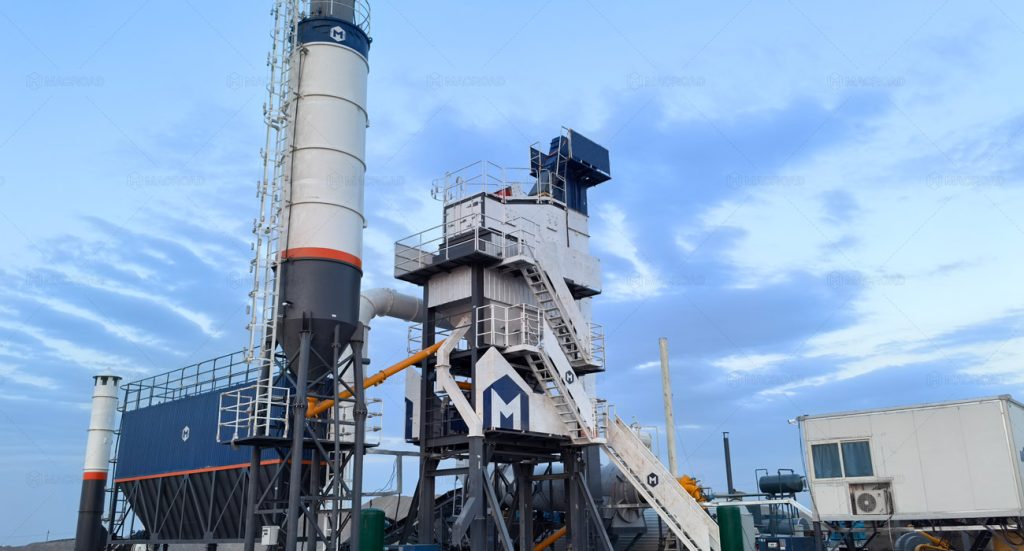
Understanding the Importance of Accurate Asphalt Dosage
The accuracy of asphalt dosage is critical in determining the quality of the final product in any mixing operation. Variability in the amount of asphalt used can lead to significant differences in the performance characteristics of the asphalt mixtures produced. This is particularly important for portable asphalt mixer, where space constraints limit the ability to make adjustments on-the-fly.
When asphalt debarrel equipment is not effectively coordinated with the bitumen batching plant, the risk of dosage deviations increases. This can result in inconsistencies that affect the durability, strength, and overall performance of the asphalt mixtures, leading to potential failures in the finished pavement. Therefore, optimizing the connection between the debarreling and mixing processes is essential for delivering high-quality asphalt.
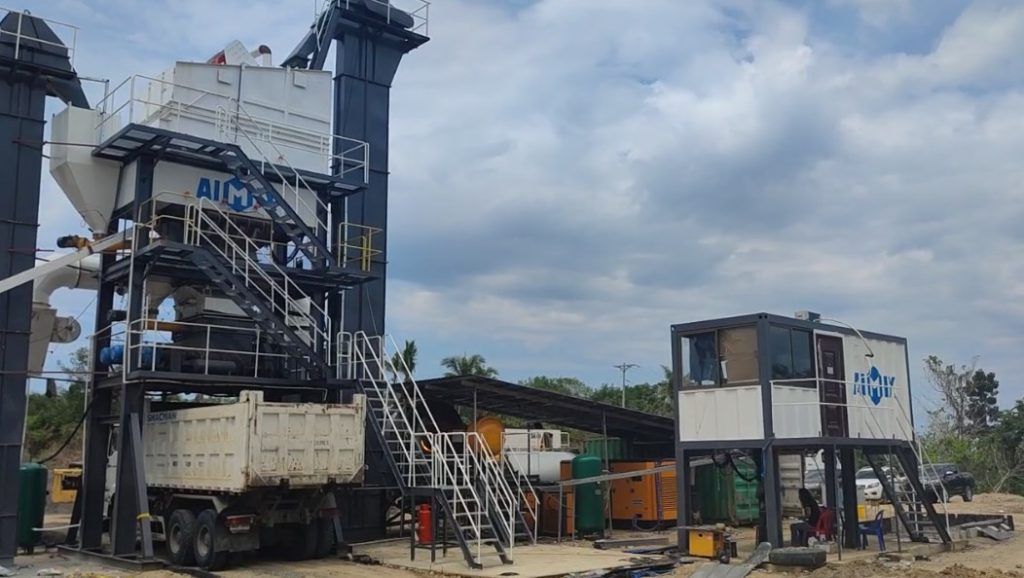
Integrating a Metering System for Precision
One of the most effective methods for achieving accurate asphalt dosing is to equip the asphalt debarrel equipment with a metering system that is linked directly to the bitumen batching plant or portable asphalt mixer. This system can provide real-time measurements of the asphalt being dispensed, ensuring that the correct quantities are delivered for each batch.
By utilizing advanced metering technology, operators can monitor the flow of asphalt with high precision. This not only helps in maintaining consistent quality across different batches but also reduces the likelihood of over- or under-dosing, which can compromise the integrity of the asphalt mixtures. Such a system allows for immediate adjustments if discrepancies are detected, further enhancing the reliability of the dosing process.
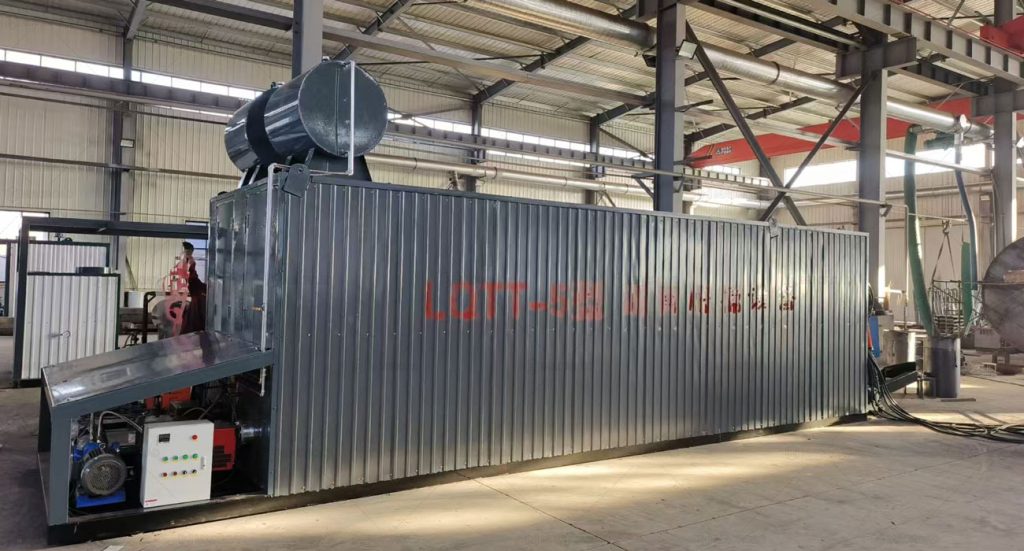
Designing Adjustable Asphalt Output Flow Valves
In addition to integrating a metering system, designing adjustable asphalt output flow valves can significantly improve dosage accuracy in portable asphalt mixers. These valves can be calibrated to control the flow rate of asphalt, allowing for fine-tuning based on the specific requirements of each batch.
Adjustable flow valves enable operators to make precise adjustments to the output based on real-time data from the metering system. This flexibility is essential in a portable setting where conditions may vary, and the need for quick adaptations is paramount. By ensuring that the asphalt flow is consistently regulated, the risk of dosage deviations is minimized, leading to more uniform and reliable mixtures in mobile asphalt mix plant.
Implementing Quality Control Measures
Finally, implementing robust quality control measures is essential for maintaining the accuracy of asphalt dosing throughout the production process. Regular calibration of the metering system and flow valves should be conducted to ensure their reliability and performance.
Additionally, operators should establish protocols for periodic testing of the asphalt mixtures produced. This testing can help identify any variations in quality and allow for prompt corrective actions if needed. By focusing on quality control, asphalt debarrel equipment can work in harmony with bitumen batching plants and portable asphalt mixers, ensuring that all batches meet the required specifications.
Conclusion: Achieving Consistency in Asphalt Production
In conclusion, ensuring accurate asphalt dosage is vital for the effective operation of portable asphalt mixers and bitumen batching plants. By integrating metering systems with asphalt debarrel equipment and designing adjustable output flow valves, operators can achieve precise connections between the debarreling and mixing processes.
These strategies not only enhance the accuracy of asphalt dosing but also help maintain the quality and consistency of the final product. By prioritizing accuracy in asphalt production, operators can deliver high-performance asphalt mixtures that meet the demands of various construction projects, ultimately leading to better outcomes in pavement performance and longevity.
Comparing Single Girder vs. Double Girder 20 Ton Overhead Crane Designs
When choosing an overhead crane with a 20-ton lifting capacity, one of the first and most important design decisions involves selecting between a single girder and double girder configuration. Each type has unique advantages and limitations, especially when working at this medium-to-heavy-duty capacity level. This article explores the key differences between single girder and double girder 20 ton overhead cranes in terms of design, performance, cost, installation, maintenance, and suitability for different applications.
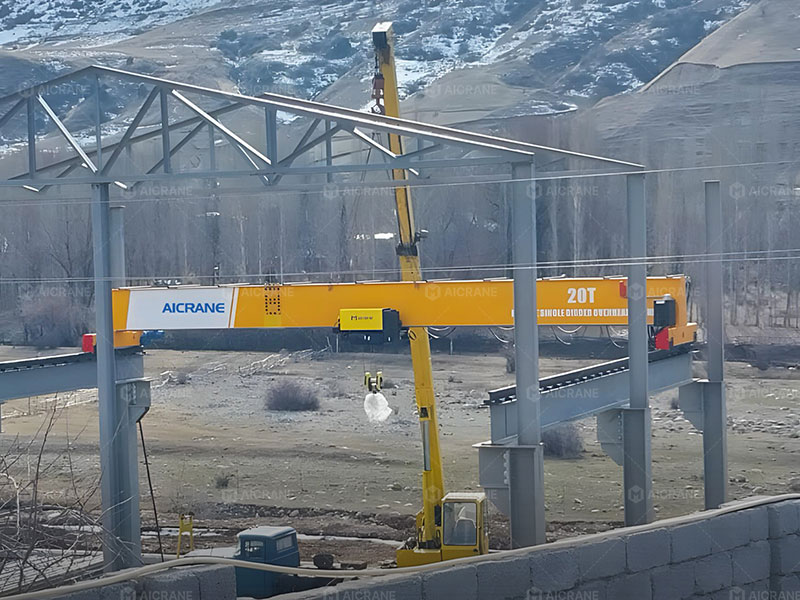
Understanding the Basics
What Is a Single Girder Overhead Crane?
A single girder overhead crane consists of one main bridge girder supported on either side by end trucks. A trolley and hoist are mounted underneath the girder and travel along its bottom flange. The hoist may be an electric wire rope hoist or an electric chain hoist, depending on the design.
What Is a Double Girder Overhead Crane?
A double girder overhead crane features two parallel bridge girders, with the trolley and hoist riding on rails mounted on top of the girders. This design provides greater lifting height, better stability, and higher load capacities.
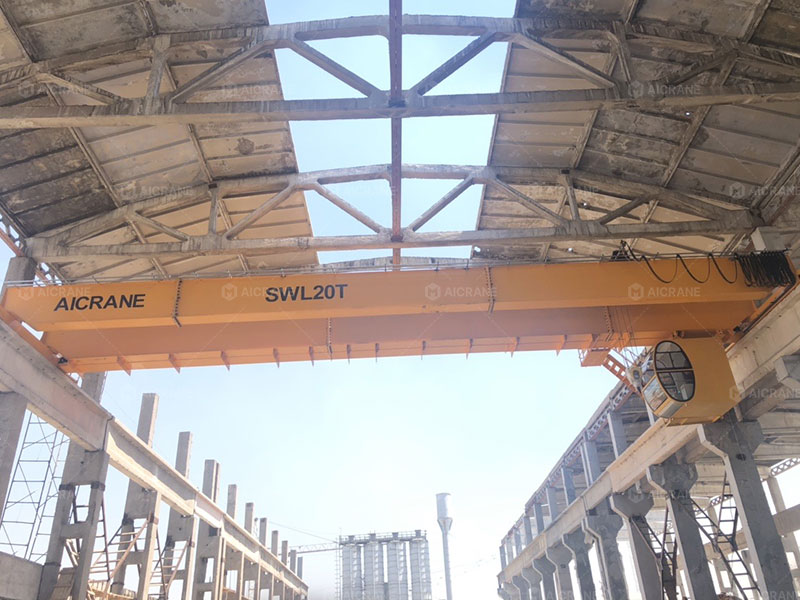
Key Comparison Areas
1. Structural Design and Configuration
Single Girder:
-
One main beam spanning the runway.
-
Lighter overall structure.
-
Hoist hangs below the beam, limiting lifting height.
-
Typically uses a top-running or under-running hoist.
Double Girder:
-
Two main beams with a trolley that rides on top.
-
Heavier and more robust structure.
-
Allows for maximum hook height.
-
Designed for top-running trolleys.
Conclusion: For applications where headroom is limited or lifting height isn’t a top priority, a single girder overhead crane may suffice. However, for maximizing vertical space, a double girder design is superior.
2. Lifting Height and Hook Approach
Single Girder:
-
Limited lifting height due to the under-hung hoist.
-
Hook approach is slightly restricted from the end.
Double Girder:
-
Higher lifting height since the hoist sits on top of the bridge.
-
Better side and end hook approaches.
Conclusion: Double girder cranes offer better lifting geometry, especially valuable in facilities with limited overhead space or when tall loads must be lifted high.
3. Load Handling and Distribution
Single Girder:
-
Suitable for lighter applications or consistent, repetitive loads.
-
More deflection under heavy loads.
Double Girder:
-
Better distribution of the 20-ton load across two beams.
-
Less deflection and greater structural rigidity.
-
Capable of handling more demanding or off-center loads.
Conclusion: For handling full-capacity loads more efficiently and safely, the double girder design offers better stability.
4. Cost Considerations
Single Girder:
-
Lower upfront cost.
-
Fewer materials and simpler design.
-
Less expensive installation and maintenance.
Double Girder:
-
Higher initial investment due to heavier steel structure and longer fabrication time.
-
Increased cost in terms of components and installation.
Conclusion: When budget is tight and the use case does not demand advanced features, a single girder 20-ton crane can be more economical.
5. Installation and Building Requirements
Single Girder:
-
Easier and faster to install.
-
Lighter load on runway beams and building structure.
-
Ideal for smaller workshops or existing buildings with limited support.
Double Girder:
-
Requires more robust support structures.
-
Heavier components mean more complex installation.
-
Best suited for purpose-built industrial facilities.
Conclusion: Consider the capacity of your building structure. If structural support is a concern, single girder may be more feasible.
6. Maintenance and Accessibility
Single Girder:
-
Fewer components make for simpler maintenance.
-
However, the hoist mounted underneath may be harder to access in certain configurations.
Double Girder:
-
Trolley and hoist are more accessible on top of the girders.
-
Easier to perform maintenance at height with catwalks or platforms.
-
More components require a slightly higher maintenance effort.
Conclusion: Double girder bridge cranes may require more proactive maintenance, but accessibility for service work is generally better.
7. Customizability and Add-ons
Single Girder:
-
Limited space for add-ons such as walkways, maintenance platforms, or cabs.
-
Less flexibility for advanced automation or heavy-duty duty cycles.
Double Girder:
-
Easily supports additional features: walkways, lighting, cab control, cameras, sensors.
-
More scalable for automated or high-duty cycle environments.
Conclusion: If future expansion or automation is planned, a double girder system offers greater flexibility.
8. Applications and Industry Use Cases
| Application Type | Single Girder 20 Ton Crane | Double Girder 20 Ton Crane |
|---|---|---|
| Fabrication Shops | ✅ Suitable | ✅ Suitable |
| Steel Coil Handling | ❌ Not Ideal | ✅ Preferred |
| Heavy Equipment Manufacturing | ❌ Limited | ✅ Ideal |
| Warehouses | ✅ Compact spaces | ✅ If high lift needed |
| Shipyards / Power Plants | ❌ Inadequate | ✅ Industry standard |
Conclusion: Double girder cranes are more versatile in terms of industries and challenging lifting applications.
When to Choose Single Girder for 20 Tons?
-
Budget constraints are a primary factor.
-
Your building structure can’t support the weight of a double girder system.
-
The lifting height requirement is moderate.
-
You have limited space and low ceiling clearance.
-
You need a compact crane for relatively repetitive or moderate-duty operations.
When to Choose Double Girder for 20 Tons?
-
Your facility demands maximum lifting height and hook approach.
-
You require advanced features or future automation.
-
The crane will be used in continuous, heavy-duty operations.
-
You are handling oversized, awkward, or very tall loads.
-
Safety, stability, and durability are top priorities.
Final Thoughts: Tailoring the Right Design to Your Needs
Selecting between a single girder and double girder overhead crane at the 20-ton capacity level comes down to balancing cost, operational needs, and space limitations. While single girder cranes are often more affordable and easier to install, double girder cranes offer unmatched performance, flexibility, and lifting height.
For some customers, the initial savings of a single girder crane may be worthwhile. But for others, especially those running demanding, high-cycle operations, the long-term advantages of a double girder design – greater lifting height, safety, and customization – will justify the higher upfront investment.
How We Can Help
At Aicrane, we provide both single and double girder 20-ton overhead cranes tailored to your specific operational and site requirements. Whether you need a cost-effective single girder crane for general lifting or a robust double girder system for heavy industrial use, our team offers custom design, professional consultation, and full after-sales support.
Contact us today to get expert guidance on choosing the right crane system for your facility.
Advantages of Small Smart Asphalt Plants in Rural Road Construction in Latin America
Rural infrastructure development is a top priority for many Latin American countries aiming to improve regional connectivity, reduce poverty, and stimulate economic growth. One of the key enablers of this transformation is the adoption of small smart asphalt plants. Compact, mobile, and intelligent, these advanced systems are tailored to meet the challenges of remote road projects where logistics, budget, and technical resources are often limited. Their growing presence is reshaping how rural roads are built—faster, cheaper, and with better long-term performance.
Why Rural Road Projects Need a Different Approach
Building roads in rural areas across Latin America is far more complex than in urban centers. Remote locations often suffer from limited access to power, water, skilled labor, and material supply chains. Transporting asphalt from centralized production facilities to these areas is time-consuming and costly, often compromising mix quality during the journey.
This is where a small, self-sufficient mini asphalt plant(mini planta de asfalto) becomes invaluable. These plants can be installed near the construction site, minimizing transport delays, material waste, and production disruptions. Their small footprint, combined with smart automation, enables contractors to deploy them quickly and manage them with minimal personnel.
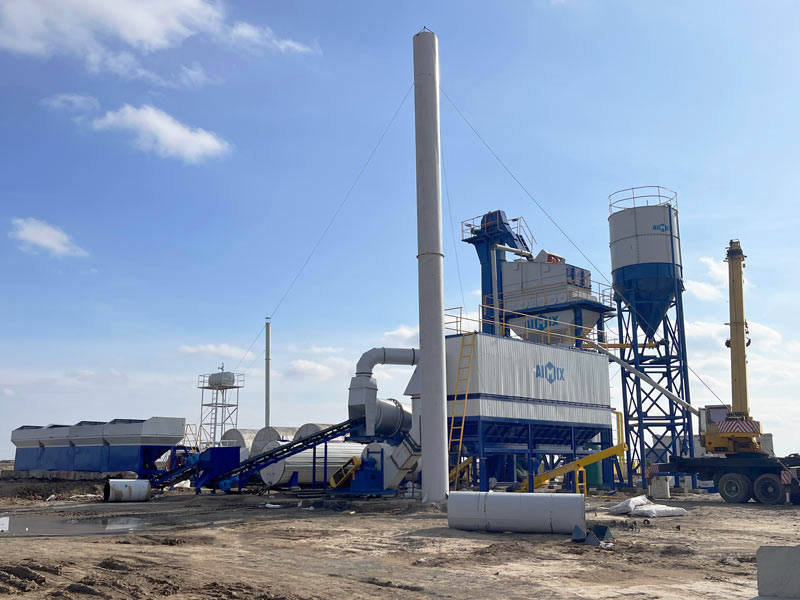
The Core Advantages of Small Smart Asphalt Plants
1. Easy Transportation and Installation
Small smart asphalt plants are usually skid-mounted or trailer-based, allowing them to be easily transported to remote job sites. Their modular design means installation can be completed in a matter of days, without the need for specialized infrastructure or heavy foundations.
Compared to traditional stationary asphalt plants(planta asfáltica), which may take weeks to install and require significant logistical planning, mobile solutions are ideal for rural environments. Once the project is completed, the plant can be disassembled and relocated to the next site—boosting long-term return on investment.
2. Automation Reduces Labor Requirements
Rural projects often face labor shortages and a lack of skilled technicians. Smart mini asphalt plants are equipped with programmable logic controllers (PLC), touchscreen interfaces, and automatic weighing and mixing systems. This allows for one-touch operation and reduces reliance on multiple operators.
With real-time monitoring and self-diagnosis features, the system can automatically adjust temperature, flow rates, and material ratios to ensure high mix quality. These capabilities make it easier for small teams to manage production effectively and consistently, even in isolated regions.
3. Cost-Effective Production for Small-Scale Projects
Many rural road projects in Latin America involve relatively short stretches of pavement—10 to 50 kilometers—which do not justify the use of large, high-capacity asphalt plants. A mini asphalt plant, with its moderate output of 10–40 tons per hour, perfectly matches the scale of these jobs.
Fuel efficiency, low maintenance costs, and reduced setup times further contribute to the plant’s economic advantages. The overall result is a lower cost-per-ton of asphalt mix, which can make the difference between completing a project within budget or facing delays and overruns.
4. Reliable Performance in Harsh Conditions
Rural job sites often present tough environmental conditions, including high humidity, dust, extreme heat, or altitude. Smart mini plants are designed with durable components, corrosion-resistant coatings, and weatherproof enclosures to withstand these challenges.
Some models even include automated maintenance alerts and remote diagnostics through IoT platforms, helping teams identify issues before they cause equipment failure. This level of reliability is crucial when spare parts and repair technicians are not readily available.
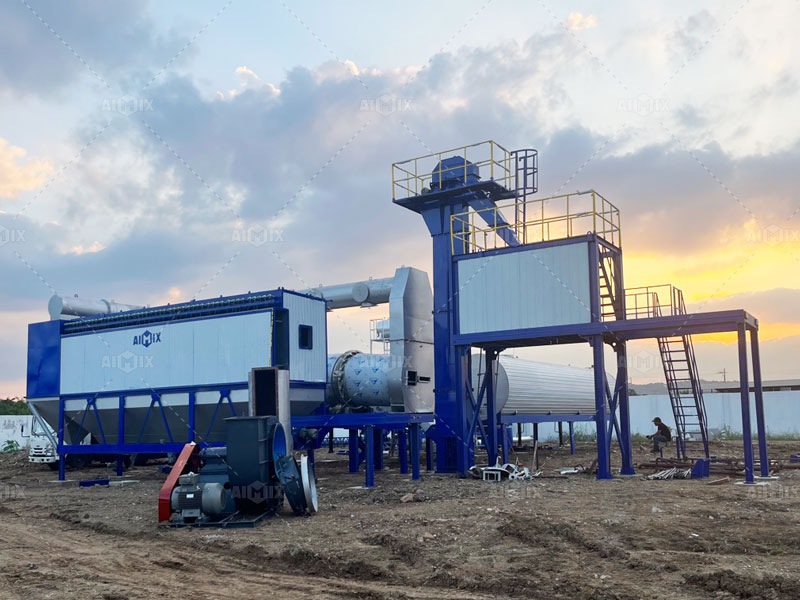
Mobile Asphalt Plants: Expanding Flexibility
Many small smart plants fall under the category of mobile asphalt plant(planta asfaltica movil) solutions, offering additional flexibility for rural projects. Whether it’s road repairs, village access roads, or agricultural transport routes, mobile plants can shift locations as work progresses.
This flexibility also enables governments and contractors to handle multiple small projects across different regions without needing to invest in separate equipment for each site. When road construction is funded by public budgets or aid agencies, such efficient use of capital is particularly valuable.
Case in Point: Rural Colombia
In rural Colombia, a government-led program to pave agricultural roads recently deployed multiple mobile smart asphalt plants to different departments. One mini plant, producing just 20 tons per hour, enabled the local team to pave 15 kilometers of road within two weeks—cutting average transport time for farmers by 30%. The project received high praise for its low cost and high community impact.
Comparing Options: What to Consider
When evaluating options for rural deployment, several factors should be taken into account:
- Capacity vs. demand: Choose a plant that matches your average daily paving needs without unnecessary overhead.
- Automation features: Ensure the plant includes auto-dosing, temperature control, and remote monitoring if available.
- Mobility: A trailer-based mobile asphalt plant may provide better ROI for multi-site operations.
- Durability and after-sales support: Make sure the supplier offers reliable technical service and readily available spare parts.
The Future of Rural Road Construction
As Latin America continues to invest in connecting its rural regions, the demand for smart, flexible, and affordable road construction technology will only grow. Small intelligent asphalt plants(planta de asfalto Perú) offer a powerful solution, bridging the gap between budget constraints and infrastructure needs.
With their compact design, efficient performance, and automation, these mini asphalt plants enable governments and contractors to deliver high-quality roads in places that were once considered too remote or difficult to serve. Whether deployed in the Andes, Amazon basin, or arid zones of northern Mexico, these plants are helping to lay the foundation—literally—for a more connected and prosperous rural Latin America.
Designing the Thermal Insulation Layer Thickness for Finished Material Silos in Asphalt Plants
When customizing mixing plants, one of the critical design considerations is the thickness of the thermal insulation layer for finished material silos. Proper insulation is essential to maintain the quality of the stored materials, particularly in varying ambient temperatures. This article explores the factors influencing insulation thickness, focusing on thermal efficiency, material characteristics, and environmental conditions.
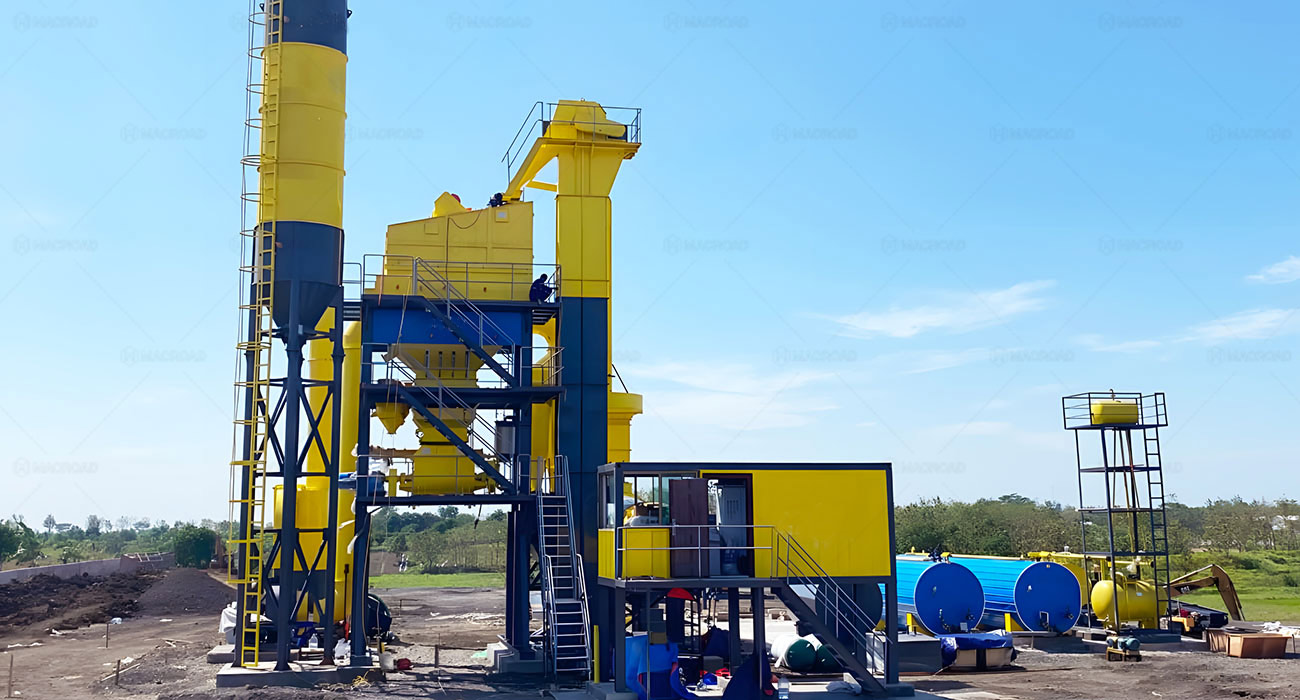
Understanding Thermal Efficiency Requirements
The primary goal of the thermal insulation layer is to maintain the temperature of the finished materials within optimal ranges. This is crucial for preventing temperature variations that can affect the quality of the asphalt mix. When customers work with an asphalt plant supplier like Macroad, they should emphasize the importance of thermal efficiency in their designs.
To determine the appropriate insulation thickness, customers must consider the specific thermal conductivity of the insulation materials used. Materials with lower thermal conductivity will require less thickness to achieve the desired insulation effect. Conversely, higher conductivity materials may necessitate a thicker layer to maintain temperature stability.
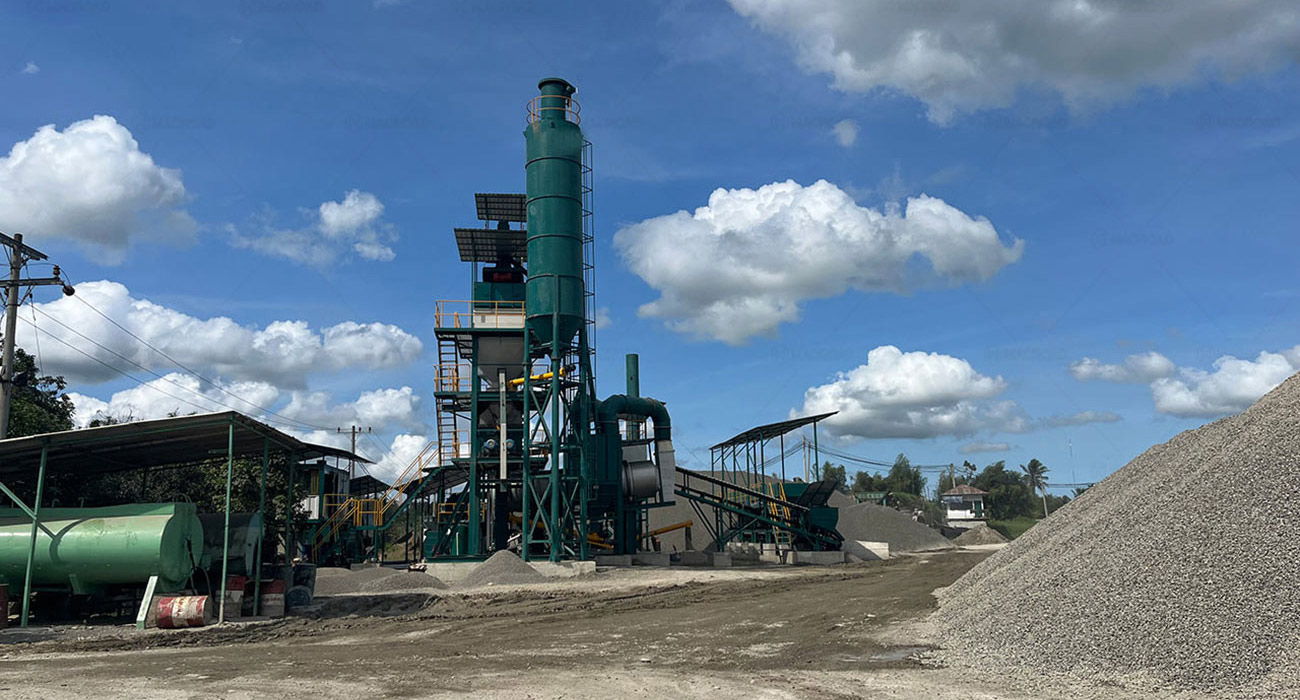
For instance, if the mixing plant is designed for hot mix plant, the insulation layer must be sufficient to prevent heat loss, especially during colder months. A well-insulated silo will help retain the heat in the asphalt, ensuring that it remains workable when transported for application. Therefore, assessing the thermal efficiency of different insulation materials is a crucial step in the design process.
Evaluating Material Characteristics
Another important aspect to consider is the characteristics of the finished materials stored in the silos. Different types of asphalt mixtures may have varying sensitivities to temperature changes. For example, some mixtures may require stricter temperature control to prevent hardening or separation. This sensitivity can influence the thickness of the thermal insulation layer.
Customers should discuss their specific material requirements with their asphalt plant supplier to ensure that the insulation is designed accordingly. If the materials are prone to changes in texture or consistency based on temperature fluctuations, a thicker insulation layer may be necessary to provide stable storage conditions.
Additionally, it’s important to consider the potential for condensation within the silo. A well-designed insulation layer will help minimize temperature differentials that can lead to condensation, which can adversely affect the quality of the asphalt. Therefore, evaluating the characteristics of the stored materials is vital for determining the appropriate insulation thickness.
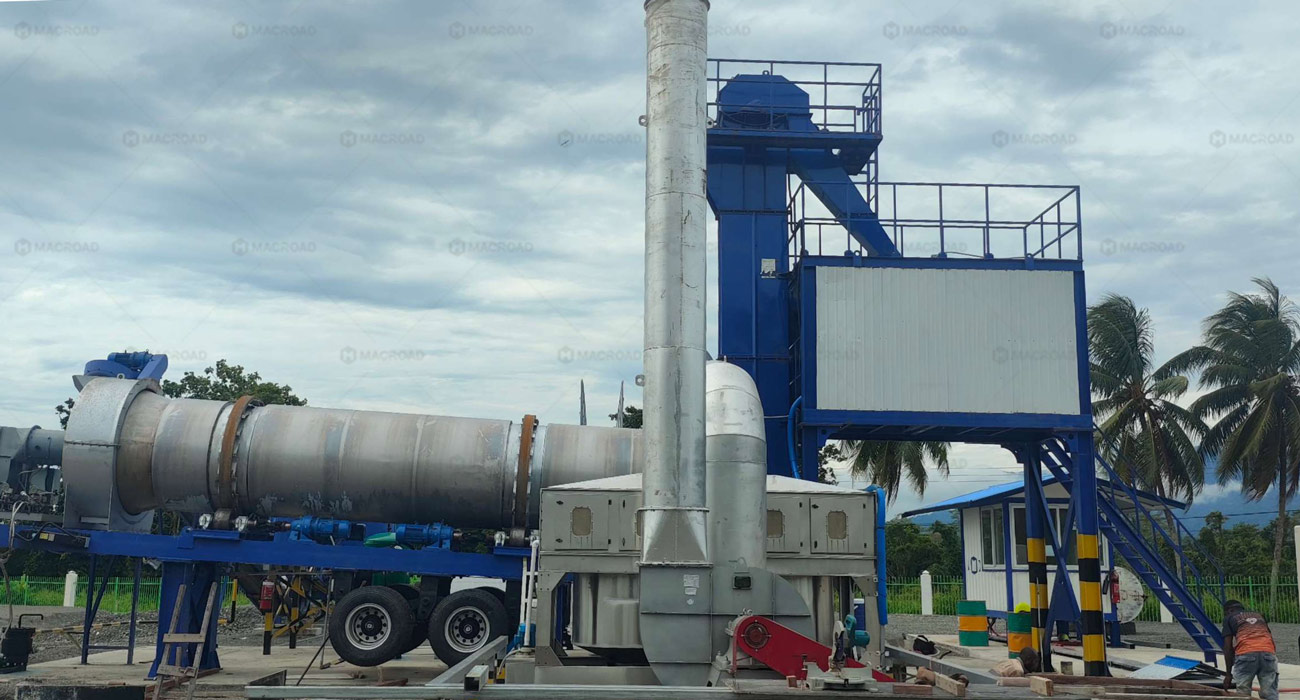
Considering Environmental Conditions
The environmental conditions in which the mixing plant operates also play a significant role in determining the thickness of the thermal insulation layer. Factors such as ambient temperature, humidity levels, and seasonal variations must be taken into account. Also asphalt plant price is an essential part of all. For instance, in regions with extreme temperature fluctuations, a thicker insulation layer may be necessary to prevent heat loss or gain.
Customers should conduct a thorough analysis of the local climate when discussing designs with their asphalt plant suppliers. This analysis can help establish the insulation requirements based on expected temperature ranges and humidity levels.
Moreover, understanding the specific operational conditions of the hot mix plant can further refine insulation thickness decisions. If the plant operates continuously or during extreme weather events, additional insulation may be required to ensure optimal performance.
Conclusion
Designing the thickness of the thermal insulation layer for finished material silos in mixing plants involves careful consideration of thermal efficiency, material characteristics, and environmental conditions. By collaborating closely with asphalt plant suppliers and evaluating these factors, customers can ensure that their customized mixing plants are equipped with effective insulation solutions. Proper insulation not only enhances the quality of the stored asphalt but also contributes to overall operational efficiency. Whether exploring asphalt plants for sale or evaluating asphalt plant prices, understanding these design elements is crucial for making informed purchasing decisions.
What Asphalt Plant Is Best for Daily Paving of 500–800 Meters of Urban Roads in Jakarta or Surabaya?
For contractors and construction firms working on urban road projects in Indonesia—especially in cities like Jakarta and Surabaya—choosing the right asphalt mixing plant can directly impact your project’s speed, cost, and quality. If your daily paving target is around 500–800 meters, your equipment must match that rhythm without causing delays or material shortages.
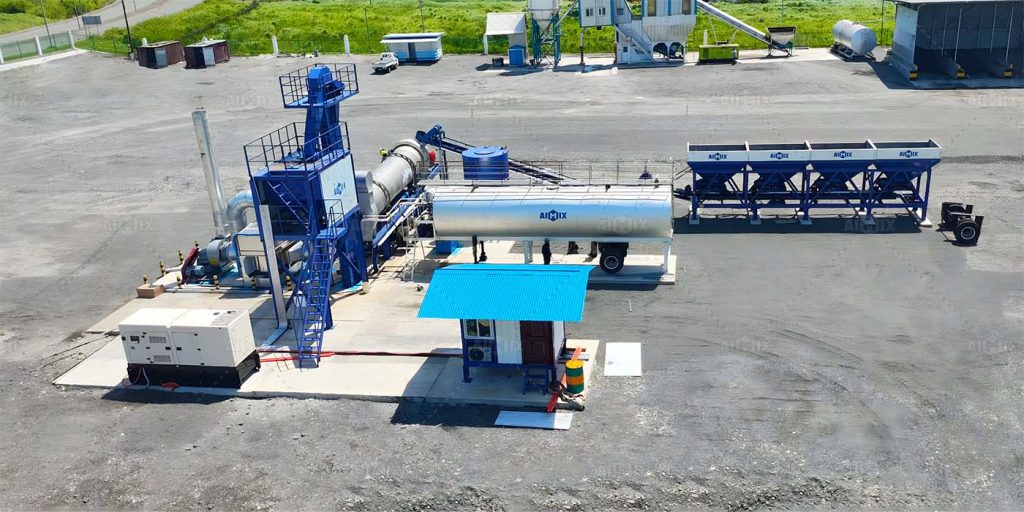
Understanding Daily Paving Needs for Urban Road Projects
Urban road construction in dense cities like Jakarta and Surabaya is not just about producing asphalt quickly. It requires consistency, mobility, and synchronization with paving equipment. On average, paving 1 meter of a 7-meter-wide road with a 5 cm thick asphalt layer consumes around 0.28–0.32 tons of hot mix asphalt. This means:
- 500 meters/day ≈ 140–160 tons of asphalt per day
- 800 meters/day ≈ 220–260 tons of asphalt per day
With this calculation, it becomes clear that you need an asphalt plant capable of producing at least 160–260 tons per day to stay on track. But raw production capacity is just one side of the equation.
Why a 40–80 TPH Asphalt Mixing Plant Is Ideal
Given the daily output target, an aspal mixing plant mini with a capacity of 40–80 tons per hour offers the perfect balance. Here’s why:
1. Fits Urban Project Schedules
With 4–5 hours of operation per day, a 40–80 TPH plant can meet your paving target comfortably. It avoids overproduction and reduces energy waste compared to oversized plants.
2. Minimizes Installation and Transport Challenges
Smaller and medium-sized plants—especially mobile types—are easier to transport and install in tight urban spaces. For Jakarta’s and Surabaya’s congested zones, this is a major benefit.
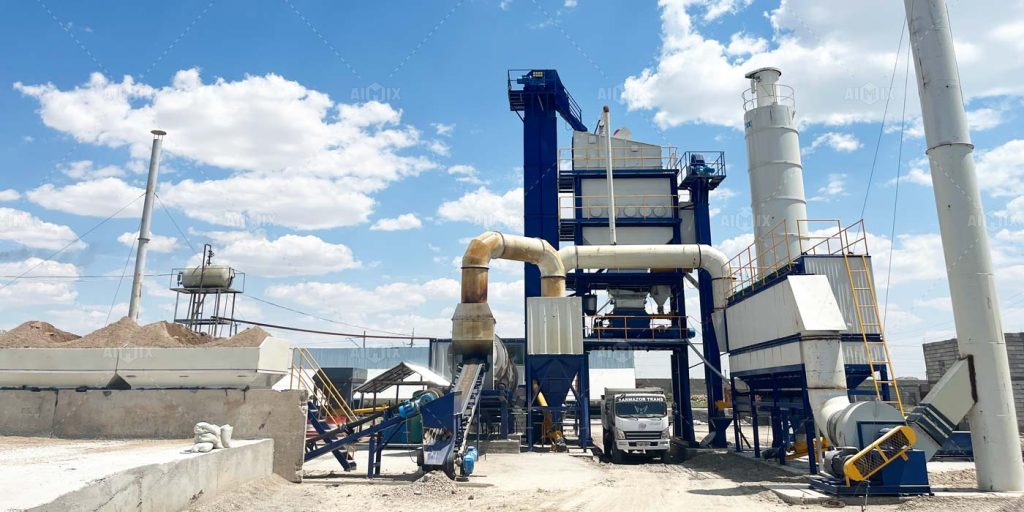
3. Syncs Well with Paver Machine Speeds
Asphalt paving machinery can typically operate at 3–5 meters per minute in urban conditions. An 80 TPH plant produces enough hot mix to maintain uninterrupted paving without forcing downtime or waste accumulation.
In short, a 40–80 TPH capacity asphalt plant ensures smoother coordination between production and paving on urban job sites.
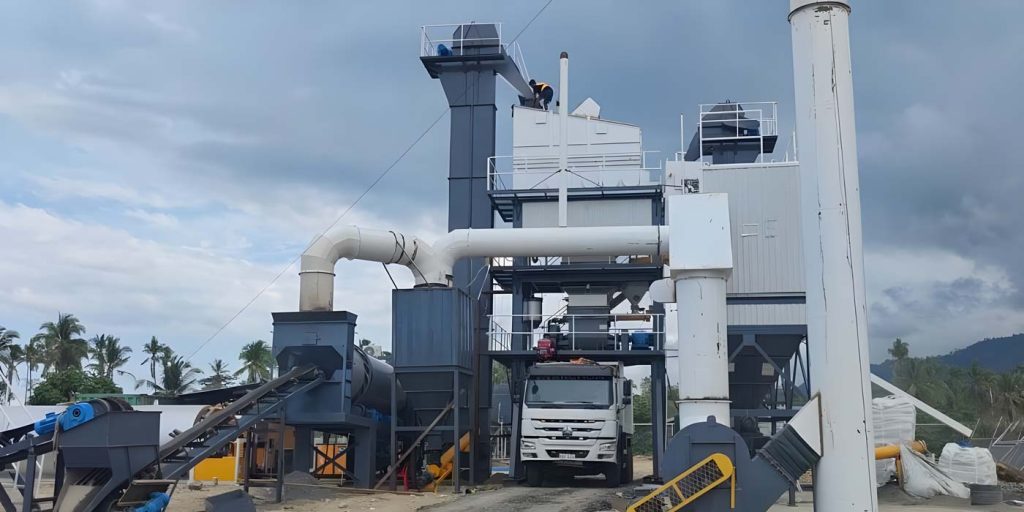
Stationary vs. Mobile: Which One Suits Urban Roads Better?
Once you’ve narrowed the capacity range, the next question is plant type. Should you choose a stationary or mobile plant for urban road projects?
Mobile Asphalt Plants: Flexible and Fast
Mobile drum mix or batch mix plants are excellent for contractors who move from site to site frequently. The mobile asphalt plant can require minimal foundation work and can be assembled in as little as 7–10 days. This agility saves time and lowers installation costs—two key advantages in urban projects with tight schedules.
Stationary Asphalt Plants: Better for Long-Term Projects
If you’re working on a long-term road rehabilitation project within one city sector, a stationary asphalt plant with a fixed foundation may provide better durability and lower operating costs over time. However, space availability is crucial.
Therefore, for projects in Jakarta and Surabaya that involve daily relocation or work in limited spaces, a mobile 60–80 TPH asphalt plant is usually the smarter choice.
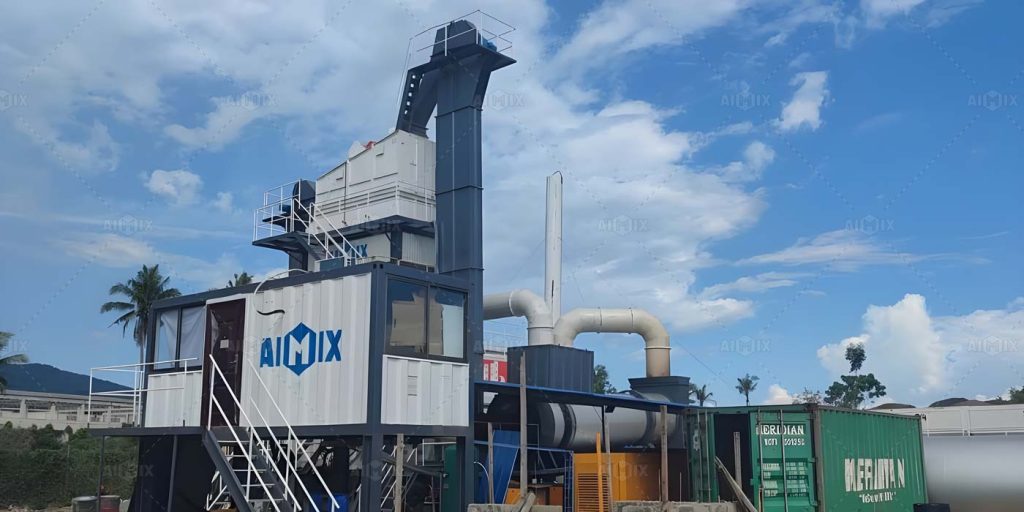
What Features Should You Prioritize?
Aside from capacity and mobility, urban asphalt projects require reliability and ease of operation. Look for asphalt plants with:
- Automatic PLC control for stable production
- High-efficiency drying system for consistent output
- Energy-saving burners to reduce operating costs
- Dust collection systems to meet environmental standards
These features ensure you meet both technical and regulatory standards without sacrificing output or efficiency.
Case Example: Jakarta Inner-Ring Road Upgrading
In a recent Jakarta inner-ring rehabilitation project, the contractor used a 60 TPH mobile drum mix plant. The plant operated for 5 hours per day, producing 300 tons of asphalt mix across two shifts. The compact layout and quick setup helped avoid project delays, while the easy relocation feature allowed the contractor to move the plant between zones seamlessly. The result? On-time delivery and smooth project handover.
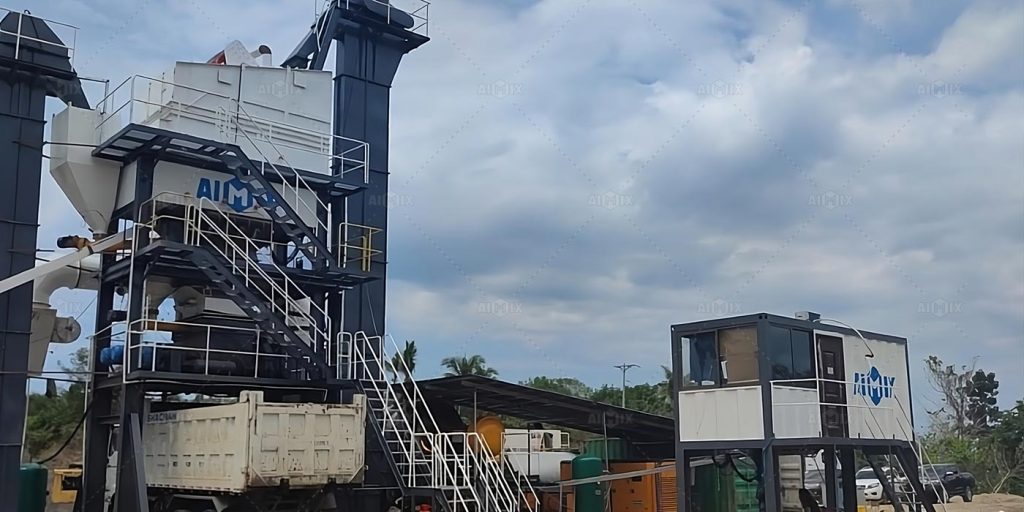
Conclusion: Match Plant Capacity to Project Reality
Choosing the right asphalt plant for 500–800 meters of daily paving requires balancing capacity, mobility, and reliability. A mobile aspal mixing plant in the 60–80 TPH range often hits the sweet spot for urban jobs in Jakarta and Surabaya. It offers sufficient daily output, is easy to set up, and supports flexible site operations.
Looking for a Reliable Asphalt Plant for Your Urban Projects?
At AIMIX Indonesia, we specialize in asphalt mixing solutions tailored for urban projects like yours. Our mobile asphalt plants range from 20–120 TPH and come with intelligent control systems, fast setup, and on-site support. With warehouses and local engineers in Indonesia, we’re ready to help you start faster and pave smarter.
Contact us today to get a quote or site recommendation that fits your project goals.
Is a Portable Concrete Batch Plant the Right Choice for You?
If you’re considering investing in a concrete batch plant, you might be weighing the benefits of a portable model against traditional stationary plants. Portable concrete batch plants offer numerous advantages, particularly in terms of flexibility and efficiency, but they also come with certain limitations that you should be aware of. Understanding the functionalities and applications of portable concrete batch plants will help you determine if this option aligns with your business needs and project requirements.
In today’s fast-paced construction environment, having the right equipment can make all the difference. Portable concrete batch plants provide a convenient solution for on-site concrete production, allowing you to meet project demands effectively. This guide will delve into the key features, components, and considerations for selecting a portable concrete batch plant that best suits your operational requirements.
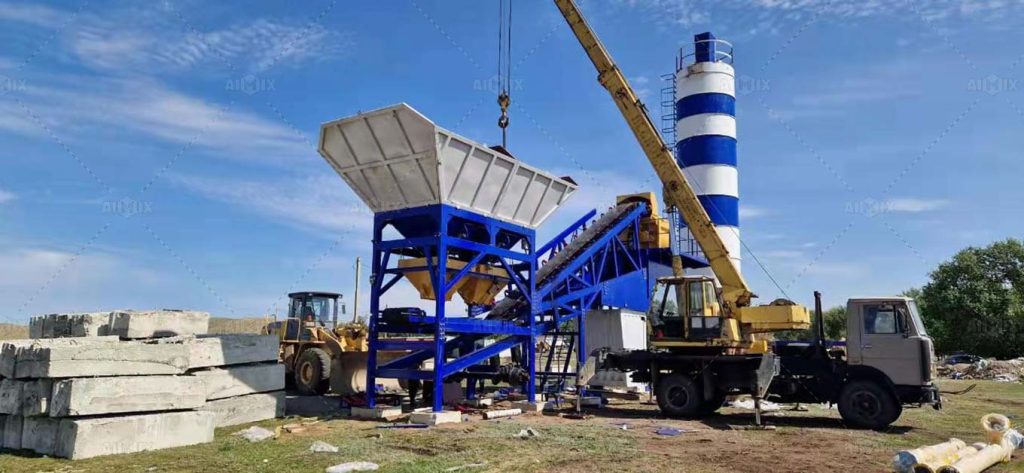
The Functionality and Applications of a Portable Concrete Batch Plant
A portable concrete batch plant is designed for producing concrete directly at the job site. This machine typically includes essential components such as a concrete mixer, aggregate bins, a cement silo, and an advanced control system. Because they can be assembled and disassembled easily, portable batch plants are ideal for construction projects that require large quantities of concrete on demand.
Efficiency and Time-Saving Benefits
Portable batch plants are significantly more efficient than traditional methods of concrete production, such as mixing by hand or using stationary concrete plants for sale. This efficiency is crucial for large-scale construction projects where time is often of the essence. By producing concrete on-site, you can minimize transportation delays and ensure that the concrete is fresh and ready for use when you need it.
Versatile Applications
These plants are not limited to large construction sites; they are also versatile enough for smaller projects, homebuilding, and even repair work. Their adaptability makes them a favored choice across various sectors, allowing contractors to handle a wide array of projects without the need for multiple concrete production sources.
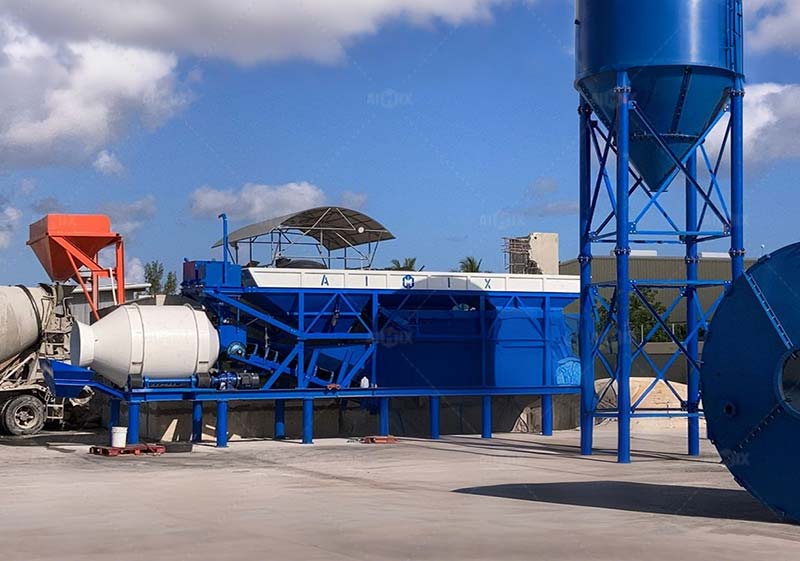
The Components of a Portable Batching Plant
A portable concrete batch plant is a self-contained unit that mixes water, sand, cement, and aggregate to create concrete. Each component plays a vital role in the production process:
Key Components
- Concrete Mixer: This is the heart of the concrete batching plant mobile, where all ingredients are combined to create concrete.
- Aggregate Bins: These bins store various aggregates needed for concrete production, allowing for easy access and organization.
- Cement Silo: The silo holds cement, which is a primary ingredient in concrete.
- Water Tank: This tank supplies water for mixing, ensuring the right consistency of the concrete.
- Control System: The control panel allows operators to monitor and manage the mixing process efficiently.
Portable concrete batch plants can be powered by different energy sources, including electricity, gasoline, or diesel fuel. This flexibility further enhances their utility across various job sites.
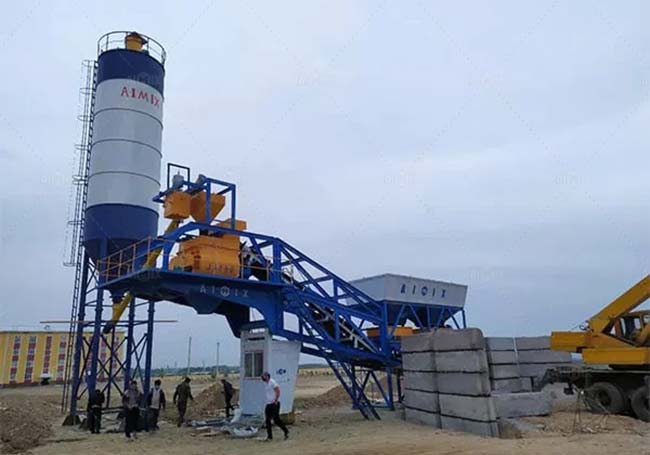
What Factors Should You Consider When Choosing a Portable Concrete Batch Plant Supplier?
When selecting a supplier for your portable concrete batch plant, several factors should guide your decision-making process. It’s crucial to ensure that the supplier has a solid reputation within the industry. Reading online reviews and seeking recommendations from trusted colleagues can provide valuable insights into the reliability of potential suppliers.
Price Comparison
Price is another critical consideration. Obtain quotes from multiple suppliers to compare concrete batching plant price and understand the market rates. Be wary of unusually low prices, as they may indicate compromised quality or service.
Customer Service and Support
Good customer service is essential when choosing a supplier. A responsive supplier will be able to address your questions and concerns promptly, ensuring that you have all the information you need for a successful purchase. Additionally, inquire about after-sales support, as reliable service can make a significant difference in your overall experience.
Final Thoughts
A portable concrete batch plant can be an excellent investment for construction projects requiring on-site concrete mixing. Their ease of setup, efficiency, and versatility make them suitable for various applications, from large commercial projects to smaller residential jobs. Understanding the key components, functionalities, and considerations for selecting a supplier will equip you to make an informed decision that aligns with your operational goals.
When considering a portable concrete batch plant, pay close attention to factors such as the size and type of mixer, the output capacity, portability, and electrical requirements. For more details and options on portable concrete batch plants, visit AIMIX.
How Mobile Concrete Batching Plant Technology Is Reshaping On-Site Mixing
The construction industry is undergoing a technological transformation, and one of the most significant advancements driving this change is the evolution of the mobile concrete batching plant. Once seen as a secondary option to traditional stationary batching plants, mobile units have grown into powerful, efficient systems capable of delivering high-quality concrete on-demand—directly at the job site.
As global construction demands rise, especially in infrastructure, urban expansion, and remote developments, mobile batching plants are becoming the preferred choice for many contractors. This article explores how mobile concrete batching plant technology is revolutionizing on-site mixing, and how it compares to traditional ready mix concrete plant setups and stationary batching plants. We’ll also look at the current trends in the market for a concrete batching plant for sale.
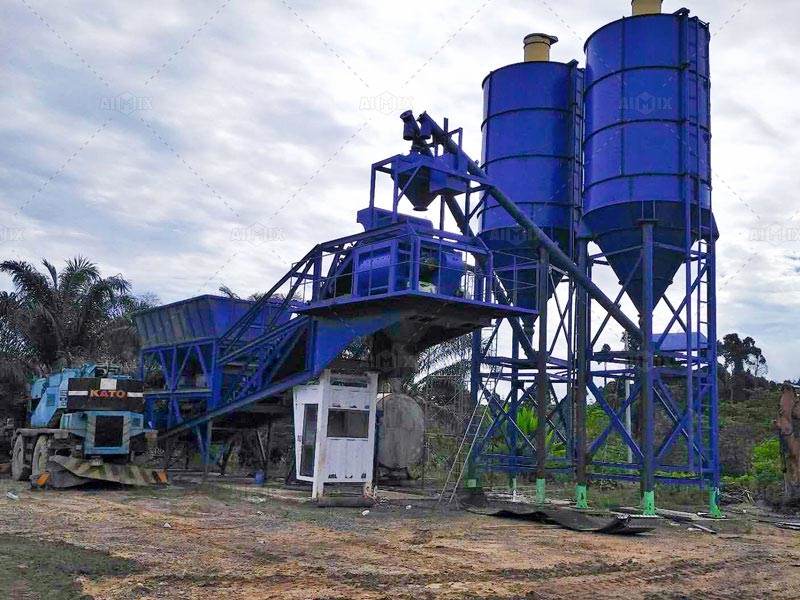
The Shift Toward On-Site Mixing Solutions
Historically, the construction industry relied heavily on ready mix concrete plants. These centralized facilities produce concrete in large quantities and transport it to job sites in mixer trucks. While effective for projects near urban areas, this model often falls short in remote or time-sensitive scenarios due to:
Long transportation times that can compromise concrete quality
Higher fuel and labor costs
Limited flexibility in delivery schedules
Enter the mobile concrete batching plant—a compact, trailer-mounted or skid-mounted system that brings concrete production directly to the construction site. This not only solves logistical problems but also gives contractors greater control over mix quality and timing.
Key Technological Advancements
Recent developments in mobile plant technology have drastically improved their efficiency, automation, and performance. These upgrades are making mobile plants an attractive alternative to traditional solutions.
1. Automated Control Systems
Modern mobile batching plants now feature advanced PLC-based control systems. These allow for precise weighing, mixing, and real-time monitoring of ingredients—ensuring batch consistency and reducing human error. Automatic calibration and diagnostics further enhance reliability and reduce downtime.
2. Compact and Modular Design
Today’s mobile plants are designed to be compact without compromising capacity. Modular designs allow for quick setup and dismantling, usually within 1–3 days, compared to the weeks it can take for a stationary setup. This portability is crucial for contractors working across multiple locations.
3. Energy and Water Efficiency
Leading manufacturers have integrated water recycling systems and energy-efficient motors into mobile batching plants. These features reduce environmental impact and operational costs, aligning with global sustainability goals in construction.
4. Real-Time Data and IoT Integration
Some of the latest models include smart sensors and cloud connectivity, enabling managers to monitor plant performance remotely. Features like GPS tracking, productivity analytics, and maintenance alerts empower teams to optimize plant usage and prevent costly delays.
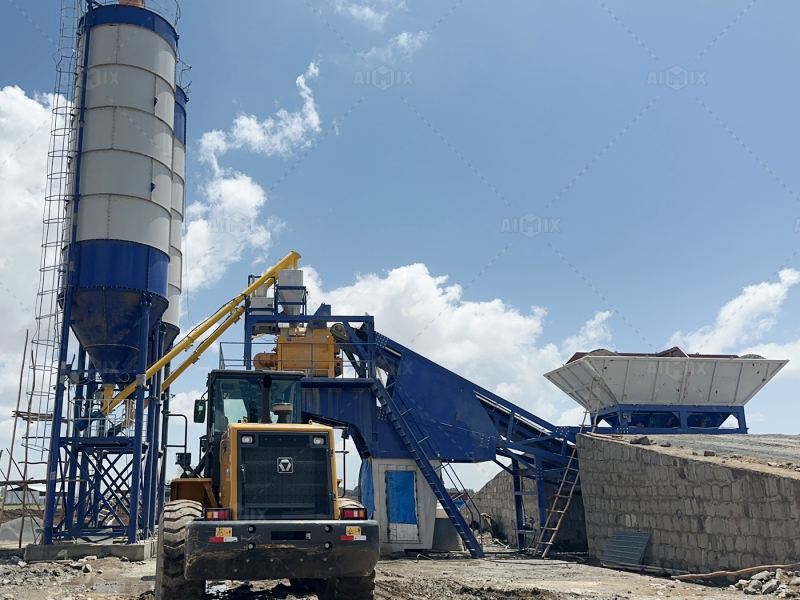
Advantages Over Stationary Batching Plants
While stationary batching plants remain essential for large-scale or long-term projects, mobile batching plants offer unique advantages:
Mobility: Easily transported between job sites
Quick Setup: Requires less foundation and fewer civil works
Flexibility: Ideal for short-term or fast-paced projects
Cost-Efficiency: Lower capital investment and reduced transportation expenses
Mobile plants are also a go-to solution for emergency or temporary works, such as disaster recovery, military applications, and seasonal infrastructure upgrades.
Ready Mix vs On-Site Mixing
A ready mix concrete plant is still suitable for urban or suburban areas where delivery distances are short. However, for remote areas or projects requiring frequent design changes, mobile plants deliver concrete with greater flexibility and responsiveness.
With a mobile plant, teams can:
Adjust mix ratios on the fly
Reduce wastage due to over-ordering
Maintain consistent supply during extended work hours
This level of control and responsiveness is nearly impossible with off-site ready mix concrete plant, where delays and quality degradation are more common.
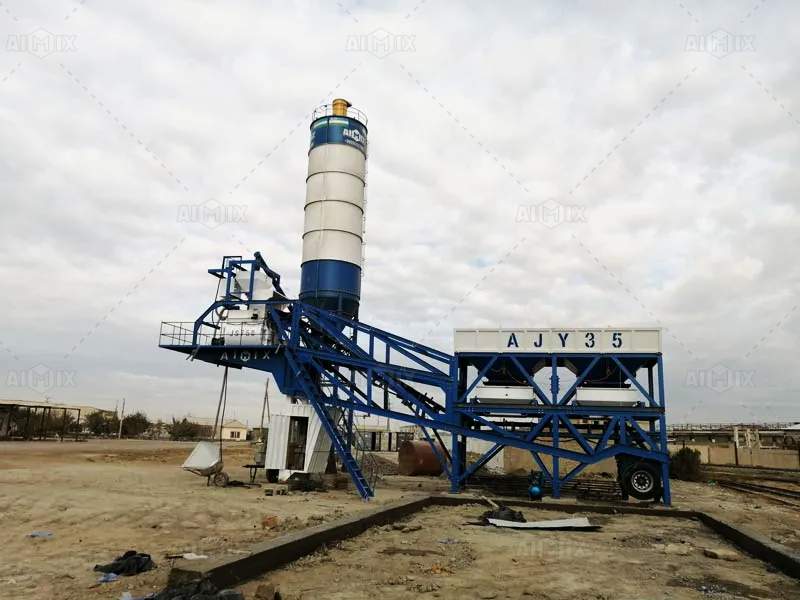
The Market Outlook: Concrete Batching Plant for Sale
As demand for faster and more efficient construction rises, so does the market for mobile solutions. The concrete batching plant for sale market is experiencing steady growth, with mobile plants leading the charge. Contractors are now seeking equipment that is not only affordable but also adaptable and technologically advanced.
Top manufacturers like Aimix, ELKON, and Liebherr are introducing mobile plants with capacities ranging from 25 m³/h to 100 m³/h. These plants are well-suited for small- to medium-scale projects, including road construction, bridge works, and commercial building development.
Key buying considerations include:
Output capacity
Type of mixer (twin-shaft, planetary, pan)
Mobility (trailer or skid-mounted)
Automation level
Service and spare parts availability
Final Thoughts
The rise of mobile concrete batching plants represents a fundamental shift in how concrete is produced and delivered in modern construction. By combining portability, automation, and high-quality output, these systems empower contractors to operate more efficiently, especially in challenging environments.
As the technology continues to evolve, mobile batching plants will likely become the industry norm for many types of construction projects. Whether you’re in the market for a concrete batching plant for sale or looking to upgrade from a traditional ready mix concrete plant, mobile systems offer a future-ready solution with clear performance advantages over conventional stationary batching plants.
How IoT Sensors Cut Downtime in Industrial Mixer Operations
In today’s fast-paced industrial landscape, efficiency is crucial. Industries rely heavily on machinery, such as mixers, to maintain productivity. Any downtime can lead to significant financial losses. This is where IoT (Internet of Things) sensors come into play. They offer real-time monitoring and predictive maintenance, significantly reducing downtime in industrial mixer operations.
The Role of IoT Sensors in Reducing Downtime
IoT sensors have revolutionized industrial operations. They provide real-time data, helping operators monitor equipment health. These sensors detect anomalies before they cause breakdowns. Thus, they prevent unexpected downtime and allow for scheduled maintenance. Predictive maintenance keeps machines running smoothly and efficiently.
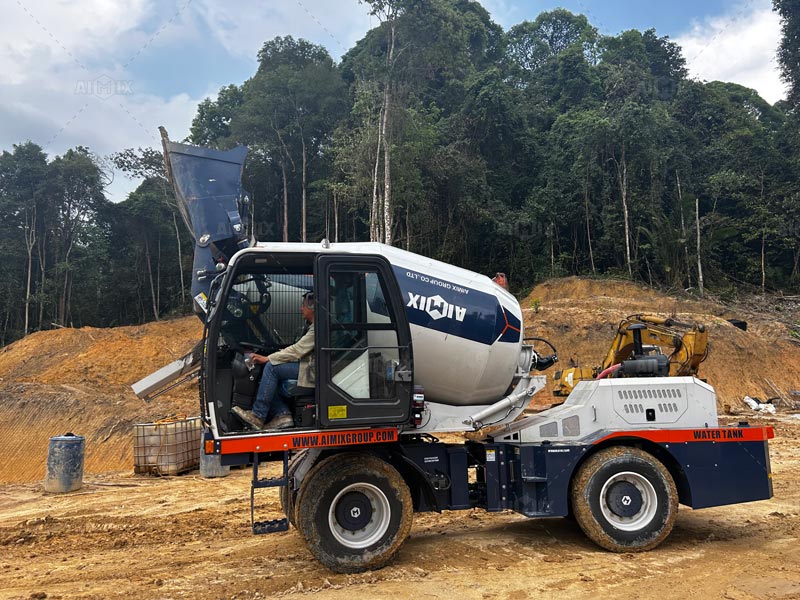
How IoT Sensors Work
IoT sensors collect data from various parts of the mixer. They monitor temperature, vibration, and other critical parameters. This data is sent to a central system for analysis. Operators receive alerts if any parameter deviates from the norm. This proactive approach prevents minor issues from becoming major problems.
Benefits of IoT in Industrial Mixers
IoT sensors offer numerous benefits. They ensure consistent mixer performance by reducing downtime. This leads to increased productivity and reduced operational costs. Businesses can save money on repairs and maximize output. Additionally, IoT data helps improve future equipment design and efficiency.
Case Study: Self-Loading Concrete Mixers
Consider the self loading concrete mixer for sale. These mixers benefit greatly from IoT integration. IoT sensors provide real-time data on mixer performance. This ensures that concrete quality remains high. Operators can identify potential issues before they affect the final product. As a result, companies experience fewer delays and better project outcomes.
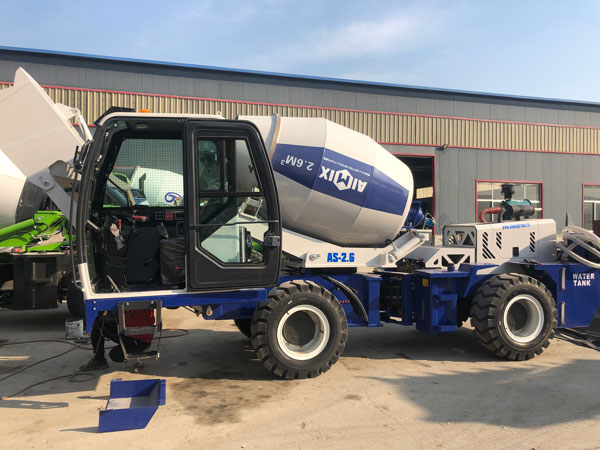
Concrete Mixers in Different Markets
IoT technology is transforming concrete mixer operations worldwide. In Indonesia, concrete mixers are vital for construction projects. The integration of IoT sensors enhances the reliability of the concrete mixer Indonesia. Companies can complete projects on time and within budget. IoT sensors provide a competitive edge in Indonesia’s growing construction sector.
Concrete Mixer Prices in Kenya
In Kenya, the construction industry is booming. The concrete mixer price in Kenya varies based on features. IoT-enabled mixers may have a higher upfront cost. However, they offer long-term savings through reduced downtime. Businesses can justify this investment with increased efficiency and lower maintenance expenses.
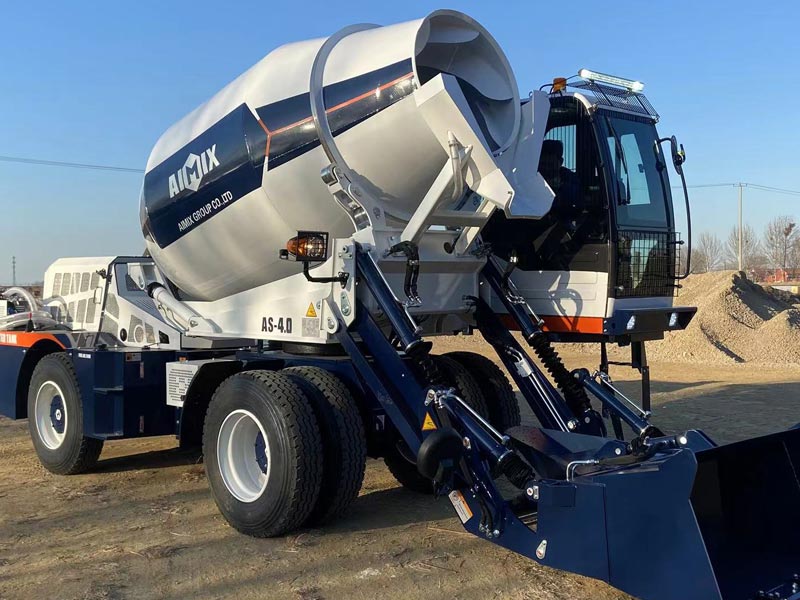
Concrete Mixer Prices in South Africa
Similarly, in South Africa, IoT sensors are gaining popularity. Concrete mixer price South Africa reflects this trend. While initial costs may be higher, IoT integration offers substantial benefits. Reduced downtime, improved efficiency, and better project management make these mixers a wise investment. Companies can achieve higher profitability with IoT-enabled equipment.
The Future of IoT in Industrial Mixers
The future of IoT in industrial mixers looks promising. As technology advances, IoT sensors will become even more sophisticated. They will provide more precise data and insights. This will lead to further reductions in downtime and operational costs. Businesses that adopt IoT early will have a competitive advantage.
Conclusion
IoT sensors are transforming industrial mixer operations. They reduce downtime, improve efficiency, and lower costs. From self-loading concrete mixers to various markets like Indonesia, Kenya, and South Africa, IoT is making a difference. As industries continue to evolve, IoT will play an even bigger role. Embracing this technology is crucial for staying ahead in the competitive industrial landscape.
How to Calculate the Optimal Capacity for Your Single Girder Overhead Crane
Selecting the optimal lifting capacity for your single girder overhead crane is critical to ensuring efficiency, safety, and cost-effectiveness in your operations. The capacity of an overhead crane directly influences how much weight it can lift and move safely. Choosing a crane with the correct capacity not only helps to optimize performance but also helps to avoid unnecessary wear and tear, prevent accidents, and improve overall operational productivity.
In this article, we’ll break down the process of calculating the optimal capacity for a single girder overhead crane. We will explore the factors you need to consider, how to determine your specific requirements, and the methods involved in making an informed decision.
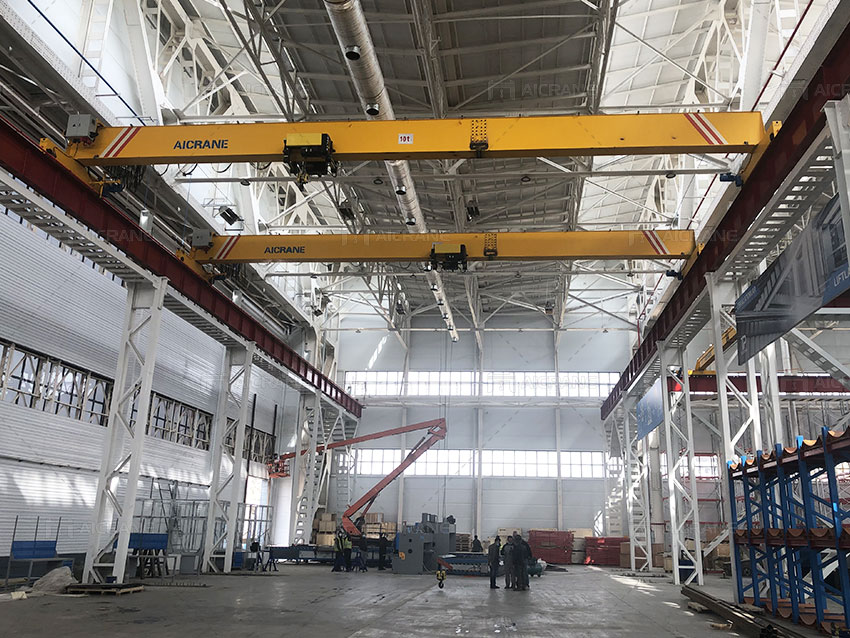
1. Understanding Single Girder Overhead Cranes
Before diving into the calculation, it’s important to first understand what a single girder overhead crane is and its typical use. A single girder overhead crane is a type of bridge crane where a single horizontal beam (the girder) is supported by two end trucks that travel along rails mounted on the ceiling. These cranes are typically used for light to medium-duty lifting tasks, making them ideal for environments such as warehouses, factories, and construction sites.
Single girder cranes come with a variety of lifting capacities, ranging from a few tons to several dozen tons. The crane’s lifting capacity refers to the maximum weight it can safely lift and move.
2. Identifying Your Requirements
To determine the optimal capacity for your single girder overhead crane, the first step is to identify your lifting requirements. This process involves considering the following key factors:
a. Type of Materials to Be Lifted
The type of materials you intend to lift is a fundamental consideration when determining crane capacity. Different materials have different densities and weights. For instance, lifting steel beams, concrete blocks, or machinery components will require more lifting capacity compared to lifting lighter materials like textiles or packaged goods.
Consider the heaviest material you will need to lift regularly and ensure that your crane can handle it. This will likely be the maximum load requirement for your crane.
b. Weight of Loads
Once you know the types of materials you will be lifting, the next step is to calculate the average and maximum weight of the loads. The maximum weight will often be the deciding factor in determining the crane’s capacity.
For example, if you are lifting metal parts that weigh 5 tons on average but occasionally need to lift a load weighing up to 10 tons, you should base your crane capacity on the maximum load of 10 tons, that is, select a 10 ton overhead crane.
c. Frequency of Lifting
The frequency at which you need to lift and move loads will also affect the crane capacity. If your crane will be used for high-frequency tasks, selecting a crane with an adequate lifting capacity that aligns with your needs will ensure smooth operations.
In addition, consider the types of lifts the crane will perform. Will it be used for continuous lifting? Or will it handle intermittent loads with downtime between lifts? Higher frequency operations might require a crane with a higher duty cycle, which is closely related to lifting capacity.
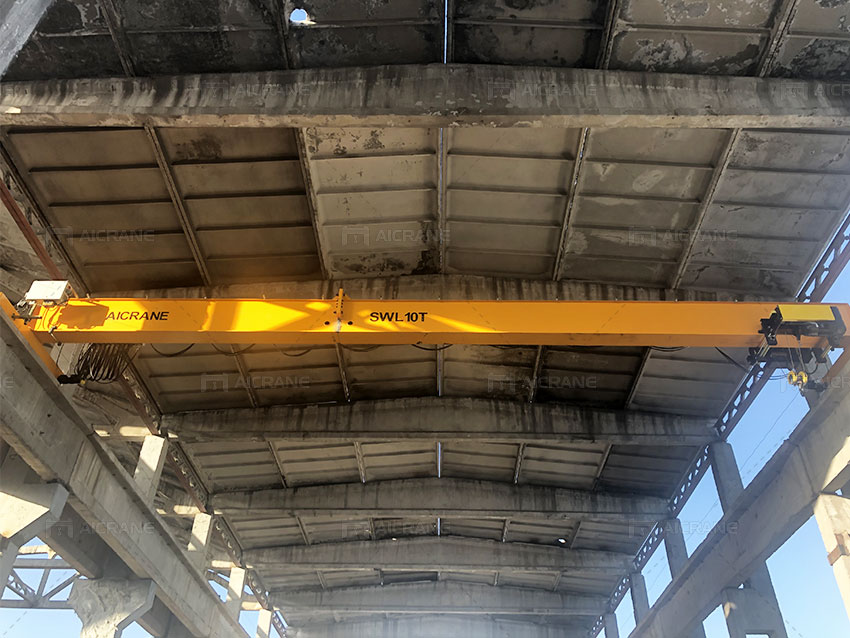
3. Calculating the Load Capacity
After identifying your lifting requirements, the next step is to calculate the optimal load capacity for the single girder overhead crane. Here are some steps involved in making this calculation:
a. Calculate the Maximum Weight of the Load
To calculate the maximum lifting capacity of the single girder eot crane, you must first determine the weight of the heaviest load the crane will need to lift. This can be done by multiplying the volume of the material by its density.
For example:
-
Material: Steel
-
Volume: 10 cubic meters
-
Density of steel: 7850 kg/m³
Weight of the load = Volume × Density = 10 × 7850 = 78,500 kg (or 78.5 tons)
Therefore, the crane should be able to handle at least 78.5 tons if lifting this material. However, this figure is only a guide, as overhead cranes are usually rated in increments of 1 or 5 tons.
b. Consider Additional Factors
In addition to the weight of the load itself, other factors must be taken into account, such as:
-
The weight of lifting accessories: Slings, hooks, and hoists used to lift the load will add additional weight to the overall lifting requirement.
-
Load swings and dynamic loads: When lifting loads, dynamic forces like momentum and sway may increase the effective load the crane needs to handle, especially when lifting large or bulky items. Cranes need to be capable of handling these dynamic forces without failure.
These factors may add an additional 10–15% to the total weight requirement, depending on your lifting conditions.
c. Calculate the Safety Margin
When calculating the optimal capacity, it’s important to factor in a safety margin. A safety margin is the difference between the maximum load and the crane’s rated capacity, which provides a buffer to account for unexpected loads, improper rigging, or other unforeseen factors.
A general rule of thumb is to add a 20–25% safety margin to the calculated maximum load. For instance, if the heaviest load you expect is 50 tons, you should choose a crane with a capacity of 62.5 tons (50 tons + 25%).
4. Considering the Crane’s Duty Class
Overhead cranes are classified based on their duty cycle, which is a measure of how frequently the crane will be used and how long it will be under load. Duty cycles are categorized from light (A1-A3) to heavy-duty (A7-A8). Each class represents the level of use the crane is designed to handle, and the duty cycle impacts the capacity you choose.
-
Light Duty (A1-A3): Low usage with occasional lifting of relatively light loads.
-
Medium Duty (A4-A5): Moderate usage with regular lifting of medium-weight loads.
-
Heavy Duty (A6-A8): Continuous or near-continuous use with heavy loads.
For heavy-duty operations, you’ll need a crane with a higher capacity and durability. If you plan to use the crane for high-frequency operations or frequent heavy lifts, the heavy duty overhead crane should be designed to accommodate that level of demand.
5. Consider Future Requirements
While determining the immediate needs is essential, you should also consider potential future requirements when choosing your crane’s capacity. For instance, if your business plans to scale up operations, expand its product range, or increase the volume of lifting tasks, it may be wise to opt for a crane with a higher capacity to avoid upgrading in the near future.
A crane with slightly more capacity than required can help avoid bottlenecks in the future and ensure your system can handle increased workloads.
6. Conclusion: The Optimal Capacity
To summarize, determining the optimal lifting capacity for your single girder overhead crane involves understanding your operational needs, calculating the maximum load and considering safety margins, factoring in crane duty cycles, and anticipating future demands.
A crane with the correct lifting capacity will help improve operational efficiency, reduce downtime, and increase overall productivity while ensuring safety. Choosing a crane that is too small can result in overloading, increased wear, and potential safety hazards. Conversely, selecting a crane with excessive capacity may lead to higher costs and less efficient performance.
By carefully evaluating your lifting requirements, considering dynamic forces, and factoring in safety margins and duty cycles, you can select the optimal lifting capacity for your crane, ensuring reliable and safe operation for years to come.
Essential Tips for First-Time Buyers: Avoiding Common Mistakes When Purchasing an Automatic Batching Plant
Investing in an automatic batching plant is a significant decision for many businesses, particularly those in the construction industry. However, first-time buyers often fall prey to various mistakes that can lead to substantial financial losses and unsatisfactory plant performance. This article aims to guide you through the common pitfalls to avoid when purchasing an automatic rmc plant, ensuring that you make an informed and beneficial investment.
Common Mistakes First-Time Buyers Make When Purchasing an Automatic Batching Plant
1. Selecting the Wrong Manufacturer
One of the most prevalent mistakes that new buyers make is opting for the first manufacturer they encounter. With numerous manufacturers available, some may rely solely on attractive marketing strategies, leaving buyers unaware of the actual quality of their products.
To ensure a smart purchase, it’s essential to conduct thorough research on potential manufacturers. Engage with existing customers to gain insights into their experiences with the mobile concrete batching plants. Customer reviews can provide valuable information about the reliability and performance of the plant. If feedback from customers is predominantly negative, or if you find that many users recommend against a particular brand, it’s wise to steer clear of those options. Always prioritize the quality and reputation of the manufacturer over their marketing tactics.
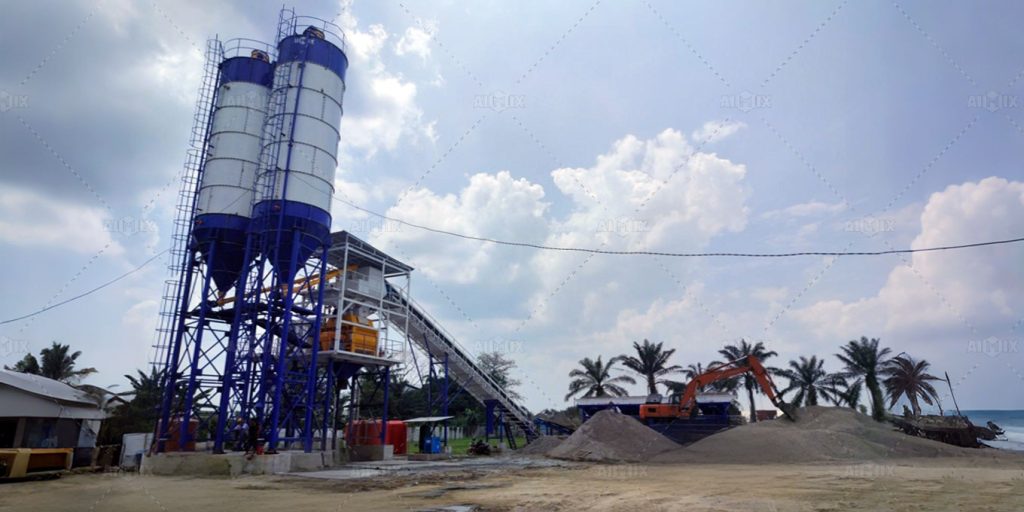
2. Overlooking the Importance of Warranty
Many first-time buyers neglect to check the warranty terms of the automatic batching plant they are considering. They may assume that any plant they purchase will function effectively for years to come. However, an adequate warranty is crucial, even when buying from a reputable manufacturer, like AIMIX Group. Automatic batching plants, like any machinery, may experience breakdowns or defects.
To safeguard your investment, look for a plant that comes with a comprehensive warranty. A long warranty term will not only cover potential repairs but also provide peace of mind. Should any issues arise during the warranty period, the manufacturer should be accountable for repairs or replacements, allowing you to operate your plant without financial concerns.
3. Failing to Conduct Price Comparisons
Another common mistake among inexperienced buyers is the failure to conduct thorough price comparisons. Some buyers may be inclined to purchase the first plant they see, without exploring other options. This can result in overspending, as prices for automatic batching plants can vary significantly among different sellers.
In today’s digital age, comparing prices has never been easier. You can research various manufacturers and their respective prices from the comfort of your home. Browse multiple websites that specialize in selling automatic batching plants and gather quotes. This will enable you to identify affordable options while factoring in shipping costs. By taking the time to compare prices, you can make an informed decision and save significant amounts of money.
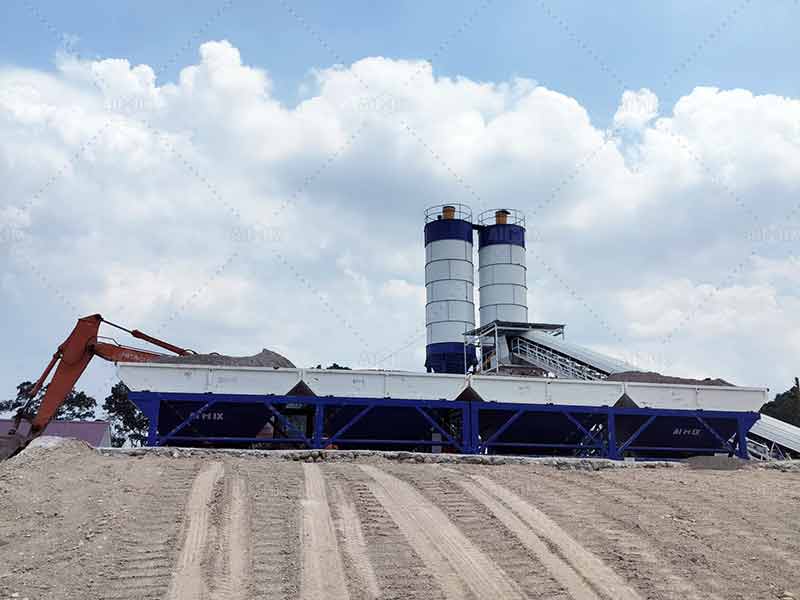
4. Ignoring the Significance of Customer Service
For buyers who have not previously operated an automatic batching plant, navigating its complexities can be daunting. Many first-time users may require additional training to understand how to properly utilize the machine. Hiring an expert to provide this training can be expensive, but selecting a seller who offers after-sale services can alleviate this burden.
Always prioritize vendors that provide robust customer service and support following your purchase. A reputable seller should offer training to you or your staff on how to operate the plant. They should also be easily accessible to answer any questions or address concerns you may have after installation. Opting for sellers with strong customer service can make a significant difference in your experience with the equipment.
5. Neglecting to Assess the Plant’s Specifications
Buyers often focus primarily on the price or appearance of the concrete plant for sale without thoroughly assessing its specifications. It’s crucial to ensure that the plant meets your specific production needs and operational requirements. Factors such as production capacity, mixing efficiency, and the types of materials the plant can handle should align with your business goals.
Familiarize yourself with various models and their capabilities. Understanding the technical specifications will help you choose a batching plant that not only fits your immediate needs but also supports your business in the long run.
Conclusion: Making a Wise Investment in Your Batching Plant
Purchasing an automatic batching plant can be a transformative investment for your business, significantly impacting your operational efficiency. By avoiding the common mistakes outlined above—such as choosing the wrong manufacturer, ignoring warranty details, failing to conduct price comparisons, overlooking customer service quality, and neglecting plant specifications—you can make a well-informed decision.
Take the time to research, compare options, and understand all aspects of your investment. With careful consideration, you can choose an automatic mobile batching plant that meets your needs, ensuring a successful operation in the years to come.